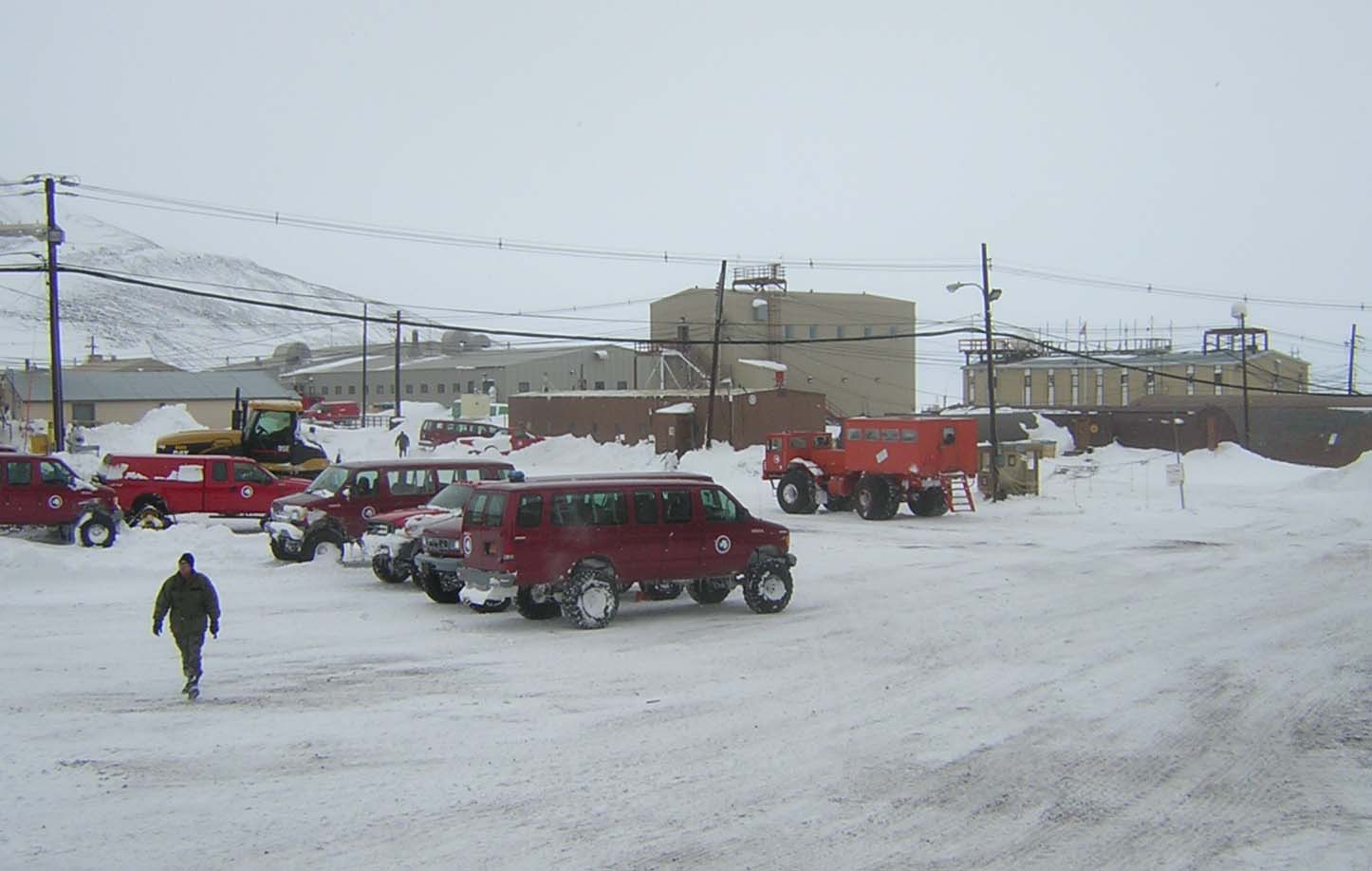Difference between revisions of "Template:Westarctica.wiki:Today's featured article"
Westarctica (talk | contribs) |
Westarctica (talk | contribs) |
||
| Line 1: | Line 1: | ||
[[File: | [[File:McMurdo.jpg|300px|left]] | ||
'''[[McMurdo Station]]''' is a United States Antarctic research center on the south tip of [[Ross Island]], which is in the New Zealand-claimed [[Ross Dependency]] on the shore of McMurdo Sound in [[Antarctica]]. It is operated by the United States through the United States Antarctic Program, a branch of the National Science Foundation. The station is the largest community in Antarctica, capable of supporting up to 1,258 residents, and serves as one of three United States Antarctic science facilities. All personnel and cargo going to or coming from [[Amundsen–Scott South Pole Station]] first pass through McMurdo. | |||
The station owes its designation to nearby McMurdo Sound, named after Lieutenant Archibald McMurdo of HMS ''Terror'', which first charted the area in 1841 under the command of British explorer [[James Clark Ross]]. British explorer [[Robert Falcon Scott]] first established a base close to this spot in 1902 and built Discovery Hut, still standing adjacent to the harbor at Hut Point. The volcanic rock of the site is the southernmost bare ground accessible by ship in the Antarctic. The United States officially opened its first station at McMurdo on 16 February 1956. Founders initially called the station Naval Air Facility McMurdo. On 28 November 1957, [[Admiral George J. Dufek]] was present with a U.S. congressional delegation during a change of command ceremony. | |||
'''([[McMurdo Station|Full Article...]])''' | |||
'''([[ | |||
Revision as of 05:33, 19 May 2019
McMurdo Station is a United States Antarctic research center on the south tip of Ross Island, which is in the New Zealand-claimed Ross Dependency on the shore of McMurdo Sound in Antarctica. It is operated by the United States through the United States Antarctic Program, a branch of the National Science Foundation. The station is the largest community in Antarctica, capable of supporting up to 1,258 residents, and serves as one of three United States Antarctic science facilities. All personnel and cargo going to or coming from Amundsen–Scott South Pole Station first pass through McMurdo.
The station owes its designation to nearby McMurdo Sound, named after Lieutenant Archibald McMurdo of HMS Terror, which first charted the area in 1841 under the command of British explorer James Clark Ross. British explorer Robert Falcon Scott first established a base close to this spot in 1902 and built Discovery Hut, still standing adjacent to the harbor at Hut Point. The volcanic rock of the site is the southernmost bare ground accessible by ship in the Antarctic. The United States officially opened its first station at McMurdo on 16 February 1956. Founders initially called the station Naval Air Facility McMurdo. On 28 November 1957, Admiral George J. Dufek was present with a U.S. congressional delegation during a change of command ceremony.
